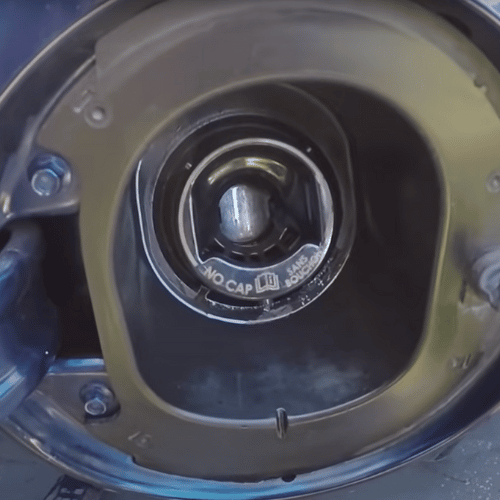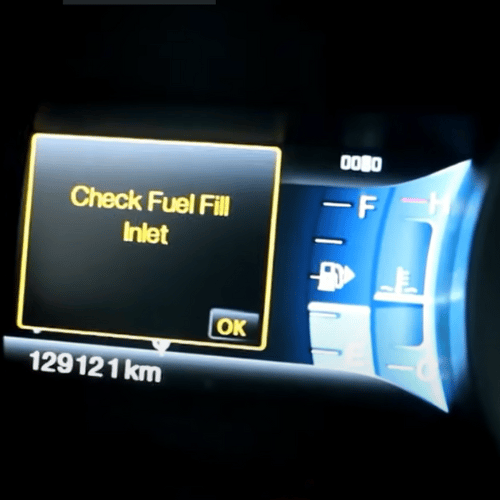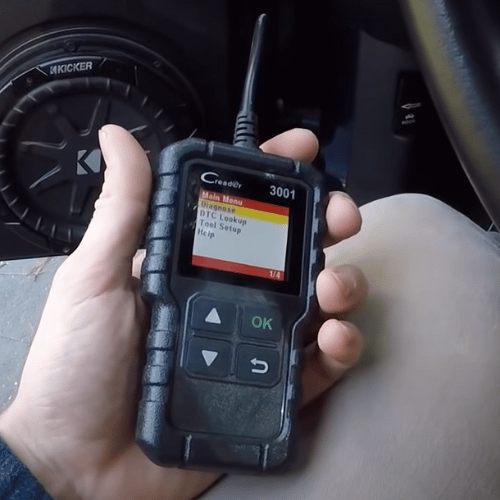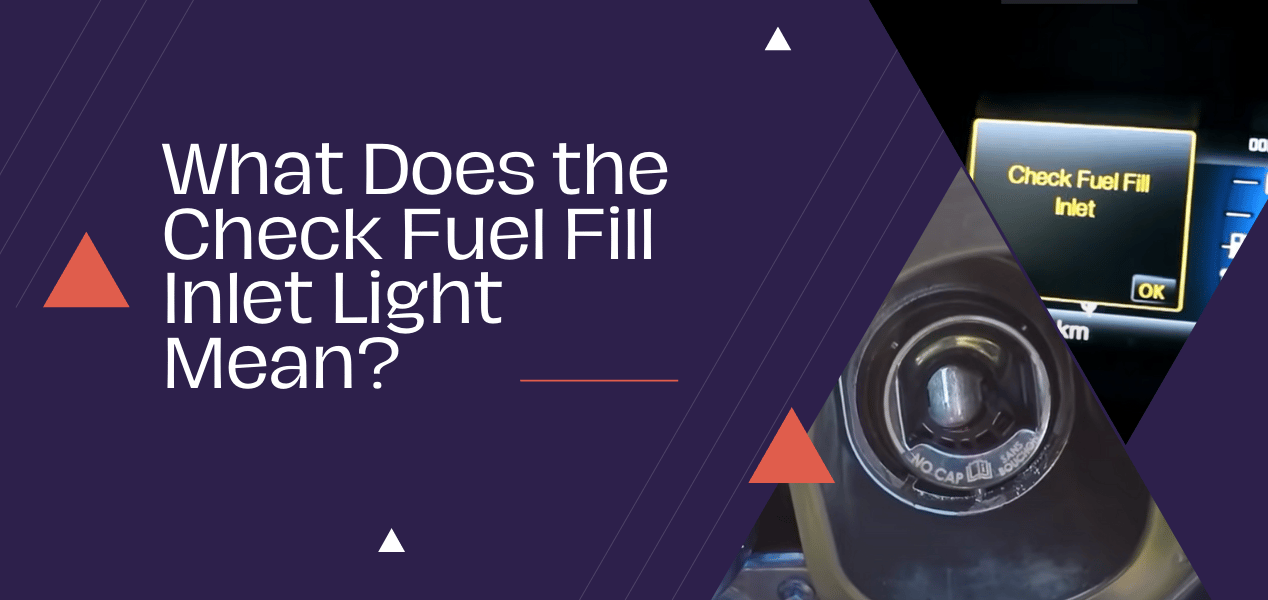One of the most frequent warnings on Ford automobiles is the check fuel fill intake warning light. The majority of car owners are unaware of the meaning of this indicator light, so when you first see it, you might be surprised. Check the filler fuel lids to make sure they are tight if you notice this message.
Your Ford vehicle’s instrument panel may display the “Check Fuel Fill Inlet” notice for a number of reasons.
If your Ford Escape displays the notice “Check Fuel Fill Inlet,” something is obstructing the fuel fill inlet. It indicates a problem with the way the fuel tank is being filled in your Ford Fusion. If the Ford Explorer’s display shows the message “Check Fuel Fill Inlet,” there is a problem with the fuel fill inlet. A “check fuel fill inlet” message on your Ford F-150 indicates that there is a blockage preventing fuel from entering the tank.
What is Fuel Fill Inlet and How Does It Work?

The area of your car where the fuel is fed is referred to as the “fuel fill inlet.” This houses the fuel cap and the input line that connects to the fuel tank of your car. It’s unquestionably a crucial part of your car since without it, you couldn’t provide it the fuel it needs to function.
Your car’s “Check Fuel Fill Inlet” light may occasionally appear out of nowhere. You should inspect the fuel fill inlet if the Check Fuel Fill Inlet warning light appears in the message center of your car to figure out what might be wrong.
A low or empty gas tank or a poor gas flow from the fuel pump to the gas tank are both indicated by a check fuel fill inlet. When this occurs, the check engine light on your car’s dashboard will blink, signaling a problem with the fuel system. Concern has been raised about the check gasoline fill inlet warning sign for a number of Ford vehicles, including Mustangs, Fusions, F150s, Explorers, and others.
What Does This Warning Light Mean?

Let’s talk about what this warning actually means when it appears on your dashboard. It can mean a number of things, but the majority of the time it means that there may be a problem with your car’s gas cap.
The first thing you should do if you notice that your “Check Fuel Fill Inlet” warning light is on is to unscrew and refasten your gas cap. If it doesn’t work, you can get a new cap and put it in its place. Always check this first because there’s a good chance that you simply did not secure it adequately the previous time you opened your gas tank and refueled your automobile.
Your dashboard’s “Check Fuel Fill Inlet” warning light may be flashing due to a loose gas cap. To find out why your dashboard warning light is still on, you’ll need to go a little further if adjusting the gas cap doesn’t cure the problem.
Possible Causes of Check Fuel Fill Inlet Warning
A loose or damaged fuel cap is one of the most frequent reasons of a check fuel fill intake light. Although this is the most common cause, the warning that appears on your car’s dashboard does not only exist for this purpose. The check fuel fill intake light can suddenly arise as a result of additional serious issues with your fuel inlet. The causes for your check fuel fill intake alarm turning on unexpectedly are as follows:
1. Missing Fuel Cap
Typically, it takes some extremely negligent driving to let petrol leak through the fuel fill inlet and the tank’s neck. A check engine light or the check fuel fill inlet light that displays on your dashboard when your car’s system deems that there are fuel leaks or the fuel tank pressure is not optimal is a more common sign that your fuel cap is missing. The advanced mechanisms in modern cars can easily identify when a gasoline cap is missing.
Sometimes after setting down the fuel nozzle at the gas station, we make the error of forgetting our fuel cap. It’s a good idea to pull over and double-check that your gasoline cap is still there and firmly fastened if you observe this light a few minutes after refueling.
2. Fuel Tank Is Not Closed Properly
Your car’s dashboard could shock you with a Check Fuel Fill Inlet warning light if the fuel tank is not properly capped. Your gasoline tank’s faulty pressure control is to blame for this. A dashboard warning light may start flashing if you forget to tighten your gasoline cap.
The majority of fuel caps are designed to click as soon as they are firmly closed. This is how your gasoline cap will signal to you that it is securely fastened.
3. Fuel Cap Is Closed Too Tight
The fuel fill inlet cap on your car is constructed and engineered with silicone or rubber to seal the fuel tank each time you close it. A fuel cap that is fastened on too firmly risked harming the rubber parts or locking mechanism. A “check fuel fill inlet” warning light may illuminate on your dashboard as a result of this damage since it could cause the pressure inside your fuel tank to leak.
4. Dirt Build-up at the Fuel Tank’s Opening
The fuel filler neck or inlet does more than just act as a fueling access point for your car. It’s a crucial, occasionally overlooked component of your car’s gasoline system. The fuel fill inlet and fuel tank are connected, allowing gas to enter the tank when filling.
Typically, fuel fill inlets are made of metal or plastic, which, while durable, may eventually degrade or accumulate dirt. Your “Check Fuel Fill Inlet” warning light can come on as a result of a clogged or damaged fuel fill inlet.
5. Dirt Build-up at the Fuel Cap
A filthy fuel cap may result in the same problems as the ones stated above for the same reasons. If a dirty fuel cap is ignored, a dashboard warning light may come on and cause problems. It’s easy to clean a grimy gasoline cap. Clean your gasoline cap as soon as you see dirt accumulation there to prevent further harm to your car and higher repair costs.
6. Evaporative Emission Control System (EVAP) Leak
Your car’s check engine or check fuel fill inlet light can illuminate due to an EVAP leak. If your car’s check fuel fill inlet light is on and your mechanic uses an on-board diagnostic (OBD-II) scanner to scan it and finds fault codes like P0455 or P0456, this suggests that your evaporative emission control system may be experiencing a leak.
It could be set off by anything as simple as a faulty or loose gasoline cap or it could be brought on by something more significant, like a damaged EVAP system component.
Although a leak in the evaporative emission control system is unlikely to do any harm to the car, it should still be handled seriously because it means that harmful substances are leaking into the atmosphere.
7. Vacuum Pressure Leak
For the pump and the engine to get enough fuel, a constant pressure inside the fuel tank is necessary. If there is a pressure leak in your car’s fuel system, the gas tank may develop a vacuum pressure seal around the gasoline cap. The “Check Fuel Fill Inlet” light would appear on your dashboard if the vehicle’s computer detected the issue.
8. Loose Fuel Cap
When you twist your car’s fuel cap closed, it should create a clicking sound; this is how gas caps let you know they’re securely sealed. It may be necessary to inspect what’s wrong with the locking mechanism of the cap and the gasoline tank fill inlet, or to replace the cap with a new one, if it clicks and then comes loose again.
9. Damaged Fuel Cap
The pressure inside the gas tank of your car cannot be properly sealed by a damaged fuel cap. Your tank’s pressure is leaking primarily because of this, which activates the “Check Fuel Fill Inlet” warning light. After a few days, changing your gas cap should cause the dashboard’s warning light to turn off if the system finds no other problems.
How to Check the Fuel Fill Inlet of Your Car
1. Check the Gas Cap and Seal
First, make sure the fuel fill entrance is correctly sealed. Put your car in park and switch off the ignition. Use the button or latch supplied to open the fuel door. Your vehicle’s fuel filler door is either on the right or left side, toward the back. Look for any leaks in the vicinity of the gasoline fill inlet.
Open the fuel door, remove the gas cap, and look for any visible damage. Check the seals; they should be in good shape and not be worn out or broken. Also, make sure the fuel cap is in great shape. Remember that even a tiny breach could cause the tank’s gases to escape.
2. Check Fuel Fill Inlet
Check each component inside and out. To light up gloomy locations, use light. Pay attention to problems including tears, wear, and cracks. As indicated before, even a little tear over time can cause significant harm.
3. Make Use of a Diagnostic Tool

Using an OBD11 scan tool is the only way to diagnose an issue if the gasoline fill inlet and gas caps are working properly. This instrument diagnoses your car and obtains registered codes that reveal problems with it. For instance, if you receive a P0457 code, the EVAP system is malfunctioning. The owner’s manual for your car is another option.
After visually inspecting the system and your fuel filler cap, you should fix or replace any broken components as soon as you can. To prevent any potential problems that could affect the life of your car’s fuel fill inlet, only use authentic parts created for your specific vehicle.
The user manual contains instructions on how to utilize the parts that the manufacturer suggests. After maintenance and replacement, make sure the light is still on.
→ Car Won’t Start But Lights Come On
FAQs about Check Fuel Fill Inlet Light
Is Check Fuel Fill Inlet bad?
If you act on the “Check Fuel Fill Inlet” warning right away, it’s not that bad. If you ignore any small problems that require your attention, they ultimately balloon into major headaches. A sensible strategy to increase the lifespan of your car is to pay attention to the warning indications it gives off and act upon them immediately away.
How do I reset my Check Fuel Fill Inlet?
Start by sanitizing, fixing, and replacing the damaged fuel cap in your gas cap or gasoline fill inlet. The check fuel inlet problem should be resolved as a result. If it doesn’t work, you might need to scan your car’s computer system to find the trouble codes.
Many qualified mechanics offer scanning services to their clients. Find a skilled mechanic to assist you in doing the scans and deciphering the data. A vehicle diagnostics tool can be purchased and used to check and clear problem codes.
How much does it cost to fix a Fuel Fill Inlet?
Let’s say your mechanic determines that your car has a broken gas cap, causing the “Check Fuel Fill Inlet” warning light to illuminate. Your new gas cap will probably set you back about $70.
That is a relatively low cost to pay for a component that is essential to the efficient operation of the remainder of your car’s fuel system. To turn off the “Check Fuel Fill Inlet” signal, however, the mechanic might have to delve a little deeper.
More than simply replacing a broken gas cap will be needed to locate and fix a vacuum pressure leak. Despite this, turning off the “Check Fuel Fill Inlet” light doesn’t have to cost a lot of money. The majority of this system’s repairs are little ones.
Conclusion
A leak in the evaporative emissions control system (EVAP) of your car or at the fuel fill inlet is indicated by the dashboard warning “check fuel fill inlet.”
Check to see that the gasoline tank is properly sealed and that the inlet pipe is clear of leaks when this notice displays on your dash.
The dashboard alert light ought to turn off once you’ve fixed the problem. Your automobile might not restart right away. After the problem is fixed, it’s typical for the light to continue to illuminate for a few kilometres. It’s a good idea to revisit the issue and see if there’s still a problem if the light remains on for hours or days.

